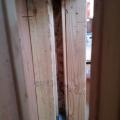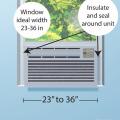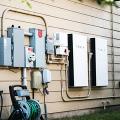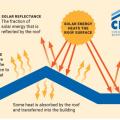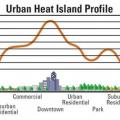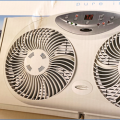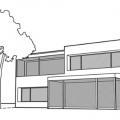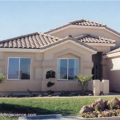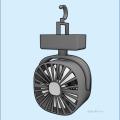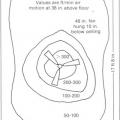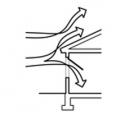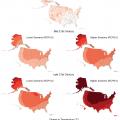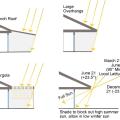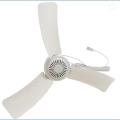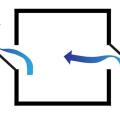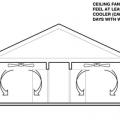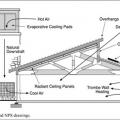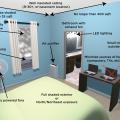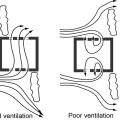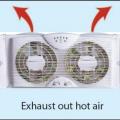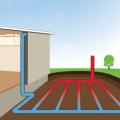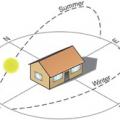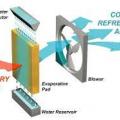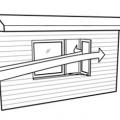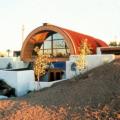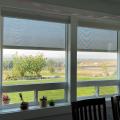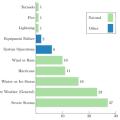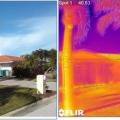Showing results 1 - 50 of 179
Example of the advanced framing technique, double-stud wall cavity, which will later be filled with blown insulation
These folding louvered porch doors provide effective shade from low-angle east and west sunlight and can open for views; the photovoltaic panels overhead allow in filtered natural light
A 5,000- 6,000 Btu/hr air conditioner drawing about 500 watts can be installed in one window of a designated cool room (it is important that the installation is insulated and well-sealed
A battery storage system can provide reliable back-up power during a grid power outage
A cool roof utilizes materials with high solar reflectance and thermal emittance to reflect solar energy and reduce heat gain to the home
A cool room should have low enough heat gains to be easily cooled by a small single-zone cooling system such as a mini-split or a window air-conditioner as shown here
A Corsi-Rosenthal Box is a highly effective DIY air cleaner made of easy to obtain materials such as HVAC filters, a box fan, cardboard, and tape
A dense concentration of buildings and pavement can create the Urban Heat Island Effect, where local temperatures can be several degrees higher than the surrounding areas
A mini-split air-conditioning system can be a highly effective low-energy approach to provide cooling to one designated zone in the house
A professional tree survey should be made prior to construction to assess the health and usefulness of each tree surrounding the future home and to determine which trees on a building site should be preserved.
A reversible window fan can operate via thermostatic or remote control and can selectively exhaust air or bring in outdoor air
A screened-in porch will protect windows from rain, provide shade, and allow more airflow through windows than window screens would
A shallow, open floor plan allows free flow of cross ventilation through the house
A typical Las Vegas hot-dry climate home made of wood frame construction and insulated with R-25 expanded polystyrene externally over a drainage plane, with an unvented wood frame insulated attic and roof assembly.
A variety of battery-powered fans can be used for a cool room without electric power; most charge off a USB charger so they can be solar charged
Air speeds generated by a typical ceiling fan are in the ideal range for providing occupant cooling without causing disruption
Airflow can be directed across thermal mass in the ceiling, floor, or elsewhere inside the home through various window and louver configurations
All populated regions in the United States can experience an extreme heat event, whether northern or southern, humid or dry, or urban or rural
An innovative U-shaped heat pump offers SEER 15 efficiency and operation with smart phones
An NFRC glazing system energy performance label will report U-factor, solar heat gain coefficient, visible transmittance, and air leakage; if the window is ENERGY certified, the ENERGY STAR label will be located next to the NFRC label
Annual average temperatures have increased across North America when comparing the present day to the first half of the last century, and are projected to increase for mid-century and end-of-century relative to the near-present
Architectural shading can include large eaves, a porch roof, a well-designed pergola, or other building elements
Calculate projection factor (PF) by dividing overhang (A) by length of window (B).
Casement windows or wing walls can create zones of higher pressure (right) and lower pressure (left) to encourage cross ventilation when wind is flowing parallel to window openings
Ceiling fans can be used to aid a night flush strategy by helping to cool down wall and floor surfaces more thoroughly at night, and by providing comfort ventilation during the day
Clerestory windows bring light in from above, reflecting it off of surfaces, making it more appealing than the direct light that comes from skylights
Comfort ventilation focuses on airflow over occupants; in this example of wind-driven cross ventilation, the air is directed through the main occupied areas of the bedroom
Cool towers like this one at the Zion National Park Visitor Center can provide cooling to a building without any energy consumption
Create a cool room to shelter from extreme heat by selecting a room in the basement or on the north or shaded side of the house, air sealing and insulating, providing low-wattage and battery-operated cooling, and reducing interior heat loads.
Dense hedges can encourage cross ventilation (left image) or not (right image) depending on how they are placed relative to windows
Density, specific heat, and volumetric heat capacity (in metric and in English units) of various construction materials
Double fan window units can have multiple operational modes; most often outdoor air will be brought in at night when outdoor conditions are cooler
Ducted whole-house fans should be installed with the duct curved and the fan suspended from rafters to reduce noise and vibration transmission to the living area.
Earth tubes buried in the ground can provide pre-cooling of ventilation air or primary cooling if designed deep and long enough
East- and west-facing walls receive significantly more sun than north- and south-facing walls in the summertime
Evaporative coolers use a fan to draw outside air through a wetted pad which cools and humidifies it
Evaporative cooling is most appropriate in areas where the summer design mean coincident wet bulb temperature is less than 70°F, shown in purple here and labeled as region “A”
Even when wind is blowing parallel to a wall, an open casement window can create a zone of higher pressure near the window opening, driving airflow into the house
Example of an earth-sheltered home in hot climate Tempe, AZ uses the cooling properties of the ground to decrease cooling costs
Exterior shading devices such as awnings or overhangs can significantly reduce cooling loads
External solar screens are an effective way to reduce solar heat gains through windows while maintaining view.
Extreme weather, such as wind, fire, flood, or extreme heat (included in the Severe Weather category above) causes most large electric disturbance events in the U.S (defined as affecting at least 50,000 customers) (data from 2000-2016)
Having both low and high ventilation openings is necessary to promote airflow from the stack effect
If a cool room is directly under an attic or roof, having lighter colored roofing (home on left) will reduce heat gain to the space as compared to darker roofing (home on right) because the temperature of the roof will be lower (see thermal image)
